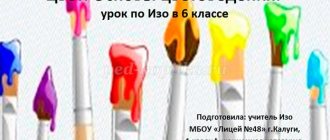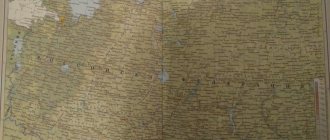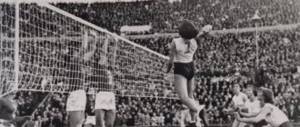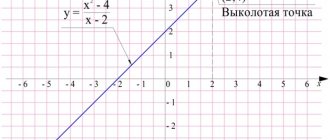Lesson summary on ORKiSE on the topic 'Cradle of Islam' (grade 4)
Lesson No. 2: The Cradle of Islam.
Goals:
- Introduce children to the history of the emergence and spread of Islam.
- Develop creative and cognitive activity.
- Form a respectful attitude towards the cultural heritage of your people.
Materials:
photographs and illustrations on the topic, presentation, electronic supplement to the textbook.
During the classes:
- Organizing time.
1) Statement of the topic and purpose of the lesson.
Teacher: The topic of the lesson is “The Cradle of Islam.” Today in class you will learn:
— What is Islam?
—Who are Muslims?
— What people developed the Islamic religion?
Teacher: You are my co-hosts. Your attitude to the lesson is important to me. At the end of the lesson, put one of the templates in the box with the inscription:
- It was interesting;
- It was usual;
- It was unclear.
- Formation of new knowledge.
- Teacher's story.
(
Slides 1, 2
)
Teacher: Guys, what do you think unites such terms as mosque, Koran, prayer, Allah, Muhammad and others? (The suggested answer is that all these concepts are inextricably linked with Islam).
(Slide 3).
Islam is one of the three world religions (along with Christianity and Buddhism). (Slides 4, 5). This is the youngest of the world's religions. Its name translated from Arabic means “submission, surrender to God.” Followers of Islam are called Muslims. This religion arose at the beginning of the 7th century on the territory of modern Saudi Arabia. Before this, the local Arab tribes were pagans, that is, they worshiped many different gods. At the same time, the ideas of Christianity and Judaism (the religion of the Jews) actively penetrated into Arabia. The founder of Islam, Prophet Muhammad, was also familiar with them. Islam was largely formed on the basis of two previous religions - Christianity and Judaism. For example, the ban on depicting living beings and eating pork came from Judaism to Islam. From Christianity and Judaism - the idea of waiting for the coming Messiah.
(Slide 6). About 30 biblical characters are included in the Koran: Adam and Eve, Cain/Kabil, Noah/Nuh, Abraham/Ibrahim, Moses/Musa, Joseph/Yusuf Maria/Mariam, John the Baptist, Jesus/Isa, archangels Gabriel/Jabrail and others. Muslims consider Jesus to be an ordinary man, not the son of God, and deny death on the cross.
Representatives of all these 3 religions often revere the same holy people, the same holy places, etc. Therefore, Islam teaches respect for the “people of the book” (i.e. Christians and Jews). (Slide 7). In Jerusalem, the third holy city of Muslims, on the Temple Mount is the Mosque of Omar (688-691) or the Dome of the Rock. The octagonal mosque is decorated with a gold dome (diameter - 20 m, height - 34 m). Here once stood the famous Solomon's Temple of the Jews, destroyed by the Romans.
(Slide 8). The rock, located under the dome of the Mosque of Omar, is equally sacred to Jews, Christians, and Muslims. It is believed that it was here that Abraham wanted to sacrifice his son Isaac to God. Muslims believe that it was from here that Muhammad ascended to heaven on the night of the Ascension. The stone preserves the footprints of the prophet and the hoof print of his horse. The rock is surrounded by wooden railings. Three hairs from the prophet's beard are kept in the mosque.
The founder of Islam and the Great Prophet is Muhammad (sometimes his name is pronounced Mohammed, Muhammad or Mohammed). (Slide 9). He was born approximately in 570 on June 8 in Mecca, which is located in modern Saudi Arabia. He died on the same day. He was buried in Medina. According to legend, the Archangel Gabriel appeared to Muhammad and conveyed a revelation from God (in Arabic: from Allah). Muhammad wrote down this revelation in the holy book of all Muslims, the Koran, and became the founder of a new religion - Islam.
The main principles of Islam are set out in the Koran. (Slide 10). The Koran (Arabic qur'an, lit. - reading), the main holy book of Muslims, a collection of sermons, ritual and legal institutions, prayers, edifying stories and parables spoken by Muhammad in Mecca and Medina. The main dogmas are the worship of one god - the almighty God-Allah and the veneration of Muhammad as a prophet - the messenger of Allah. Muslims believe in the immortality of the soul and the afterlife. It is impossible to translate from Arabic - holiness is lost. The “real” Koran is printed in one of the cities of Saudi Arabia, in a specially consecrated printing house.
Islam rests on the “five pillars” - the basic rules that every Muslim must follow. (Slide 11).
- Shahada
- the belief that there is no God but Allah, and Muhammad is the messenger of Allah;
- Namaz
- daily 5 times (from dawn to sunset) prayer. Women and children read it at home. Boys from 12 years old in the mosque.
- Zyaket
— Charity for the benefit of the poor - 1/40 of annual income.
- Fasting in the month of Ramadan (from dawn to dusk)
- Hajj
- A 6-day pilgrimage to Mecca (Hajj), performed at least once in a lifetime.
(Slide 12). Islam is the second largest religion in the world (after Christianity) and the fastest growing religion on the planet. Today Muslims live in more than 120 countries. In 35 countries, the majority of the population is Muslim.
One of these countries is located in both Europe and Asia (Turkey).
One is in Europe (Albania).
16 countries are in Africa (Egypt, Algeria, Sudan, Morocco, etc.).
26 countries in Asia (Saudi Arabia, Iran, Iraq, Afghanistan and others).
In Russia, Islam is the second largest religion (after Orthodoxy). There are three regions in our country where Muslims predominate among believers. This is the North Caucasus, which includes six republics with a predominantly Muslim population: Chechnya, Ingushetia, Kabardino-Balkaria, Dagestan, Adygea and Karachay-Cherkessia, the Tatar Republic and the Bashkir Republic. In all major cities of Russia, where Orthodox Christians predominate among believers, there are also Muslims and Muslim mosques.
2) Work according to the textbook.
— Vocabulary work (Islam, Muslims, pagans, idols, Bedouin Arabs, caravan, temple, cube, tribe, prophet).
— Reading in a chain.
- Today, using an imaginary time machine, we will go into the distant past 1310 years ago. It was from then that one of the most widespread world religions, Islam, originated. Islam
is a world religion, and today there are almost 1 billion 5000 million of its followers living on the globe.
Many of them live in our country - the Russian Federation. The word Islam translated from Arabic means “ peace and submission to God
.” People who converted to Islam are called Muslims, that is, “submissive to God.” - God in Islam is called Allah
, and the main
holy book of Muslims is called the Koran
. As stated in the Quran, Allah chose the best of people as his messengers to people so that they would carry the teachings of truth and faith. The last messenger was Muhammad, with whom the history of Islam began. - Arabia is the cradle of Islam
. The Arabian Peninsula is located in western Asia. It is washed by the waters of the Red and Arabian Seas and the Persian Gulf. The climate on the peninsula is difficult to live in; scorching heat reigns there all year round. Almost all of Arabia is a desert with little water. It rains occasionally. Only in some places you can find deep wells with water.
- Desert inhabitants - Bedouin Arabs
. From time immemorial, they raised camels and sheep, which ate frail bushes and grass. Desert inhabitants roamed from one pasture to another all year round. Some Arabs lived in cities. The largest of them in ancient times were Mecca, Yathrib (Medina), Taif. Residents of the cities were engaged in crafts and trade. Some of them traveled long distances with trading caravans.
- The Arab tribes were led by leaders
who were distinguished by courage and courage. Members of each individual family and the entire tribe protected from each other. They lived by the rule “one for all, all for one.” The leaders of the tribe were men. And the women obeyed them.
- The Arabs were pagans
. They worshiped different deities and counted idols in the form of stones, rocks, trees, animals and stars. There were idols not only in every tribe, but also in every home. In order to please their gods, the Arabs gave them part of the harvest and sacrificed livestock.
- Their main idols
each tribe delivered to Mecca.
This city appeared due to the fact that here in ancient times the sacred Zamzam spring began to flow from underground. The appearance of the source was associated with the names of the prophet Ibrahim (Abraham) and his son Ismail (Ishmael). Ibrahim and Ismail built a temple in Mecca, which is called the Kaaba. (Slides 13, 14, 15, 16, 17, 18). It is made of stone and is shaped like a cube. A special stone was embedded in the wall of the temple, which was initially white, and then, as believers think, turned black from human grief and tears. Now it is called the Black Stone of the Kaaba
. It was here that the pagans brought images of their gods. By the 7th century, when Islam emerged, there were more than three hundred idols in the Kaaba. - Arabs have lived in Mecca since ancient times Quraish tribe
, whose main occupation was trade. In addition, the tribal nobility kept the keys to the Kaaba. The Quraysh were given the task of providing water and food to travelers who came to Mecca every year to worship idols.
— Questions and assignments based on the textbook.
- Work on the electronic supplement to the textbook.
— View illustrations (3).
— Interactive moments (2).
— Control (3 tasks)
4) Additional material on the topic. (Connection with life: observations of children, photographs, stories of adults, etc.) (Slides 19, 20)
5) Homework.
- If desired, select interesting material on the topic.
- 6-7 pages of the textbook (read).
6) Lesson summary.
—
What new did you learn in the lesson?
—
Drop your lettered templates into the drawer.
Faith in Allah (lesson on aqidah)
In this lesson you will find an explanation of some of the names of Allah, creative tasks and outdoor games.
Lesson topic: “Faith in Allah”
- Assalamu alaikum wa rahmatullahiv barakatuhu.
Let's all close our eyes now. What do you see?...Once upon a time it was exactly the same. There was neither our land on which we live, nor the sun, nor the stars. There was nothing at all. Now open your eyes, look around (look out the window): what do you see?... That's right, Allah created all this. Why do you think?...Because He decided that it would be useful to people. Everything that Allah has created is beautiful and has no flaws. Here is this desk and chair and all the objects in the classroom. Who created them? ... Yes, some person. Do you see him? ... no, we don’t see it, we don’t even know who exactly made it and where it is. But why do we know that he exists? ...Because there are these objects, if these objects exist, then there is the one who created them. If there were no creator of these things, then the things themselves would not exist. When we see each other, when we see the sun, stars, water, trees, we know that we created them. And we even know Who created them. Who? ... That's right, Allah. Therefore, we believe in Allah and give Him praise. verse: “Glorify the name of your Lord, the Most High, who created all things and gave proportion to everything” (87:1-2)
CRAFTS: Children make figures from plasticine on a free theme.
- Let's see who did what. Let's make a mini-exhibition. Let's put all the crafts in one place and admire them. Guys, how did you make your craft? First, they took plasticine, softened it in their hands, divided it into parts, formed these parts and stuck them to each other. Sometimes something would fall off and we would reattach them. Maybe someone didn’t turn out as beautifully as we wanted, or not as smoothly. But we put a lot of effort and effort. Children, do you know how Allah creates? How does He create? Maybe someone knows?... He should say “be” and this thing will appear, be created beautiful and without flaws, all at once. Can you do this?... That's right, only Allah can do this. Isn't it amazing? Allah is the Creator of all things, Al-Khaliq. AYAT: “He is Allah, the Creator, the creator, the Giver of light...” (59.24) “He is the Creator of the heavens and the earth. When He makes a decision, all He has to do is say: “Be!” - how it comes true" (2:117)
ACTIVE GAME. The teacher calls the name of the subject. If Allah created this object out of nothing, then the children jump up and shout “Allah” (you can also raise your hands up). If an object is made by a person, from those things that Allah created, the children squat down and say “man.”
WORKING WITH PICTURES (cards, books).
- Now let's look at the different creations of Allah.
- Allah created each of us: me, you, mom, dad, grandmother, grandfather. verse: “The Most Gracious taught the Quran, created man” (55:1-3)
- Allah created the nature around us: look at the picture, what do you see here?... Forest, trees, bushes, field, grass, cloud, sun. AYAT: “...the sun, the moon and the stars - they are all submissive to His will...” (7:54). The sun rises only by the will of Allah. Because only He is Omnipotent - Al-Qawiy. Do we need the sun? Why? … Allah also gave us rain. Why do we need rain?... AYAT: “Verily, only Allah has knowledge of the Hour, sends down rain and knows what is in the wombs...” (31:34). Imagine what would happen to us if there were no water, sun or air that we breathe. In gratitude for such gifts, we should thank Allah and say “Alhamdulillah”.
- Allah created animals. What kinds of animals are there? ... wild and domestic. What wild animals do you know?... and what domestic animals? “He created all kinds of pairs of animals and plants, and He created for you among ships and cattle those that you ride on” (43:12).
- Allah created water and its inhabitants. Tell me who lives in the water?... Let's see who else can live there.
- Allah created many different birds. Let's remember them. AYAT: “Did they not see the birds obediently flying in the sky? No one holds them back except Allah. Indeed, in this is a sign for the people who believe" (16:79)
- Allah, the giver of sustenance - Ar-Razaq. Where do we find food for ourselves, let's see: vegetables in the ground, fruits on trees, milk, eggs, cottage cheese from animals... Allah feeds even animals: here is a lamb that eats grass, a monkey that got a banana from a palm tree... verse: “No on there is not a single living creature on earth for which Allah does not provide food....” (11:6).
- Allah also gave people materials from which people can build something, do something. Look, what is this? (swing). Man made them, but from what? From the metal that Allah gave us. But this village house?... In the same way, people made it from wood, given by Allah. Or other houses made of stone. verse: “We also sent down iron, in which lies mighty strength and benefit for people..” (57:25).
MINI CHARGER. Children walk in a circle, holding hands, saying “we walk in a circle, we praise Allah, La ilaha illallah Muhammad rasulullah.” In the opposite direction: “top top itep atlyybyz without Allahn maktybyz, La ilaha illallah Muhammad rasulullah”
NEW WORDS: Al-Khaliq. Al-Qawiy, "Ar-Razaq", Alhamdulillah.
JOINT CREATIVITY. Children sit on both sides of whatman paper (wallpaper - if there are many children). Those who sit at the top draw everything that Allah created above - clouds, clouds, sun, rain. Those who sit below draw terrestrial things - trees, bushes, seas and rivers, fields, mountains, flowers. After drawing, glue the pictures in places: fish in the lake, birds closer to the clouds, trees on the ground, animals.
Discussion on the created picture: what would happen if the sun was lower or higher? What would happen if there was no rain or if it rained every day? What would happen if birds lived in water and fish lived on land?...
Conclusion: Allah created and arranged everything with wisdom. Therefore, we must not forget to give thanks for everything He has given us.
Author: Albina Sabirova 5/5 (5)
5/55
Please rate the article
Spread the love






